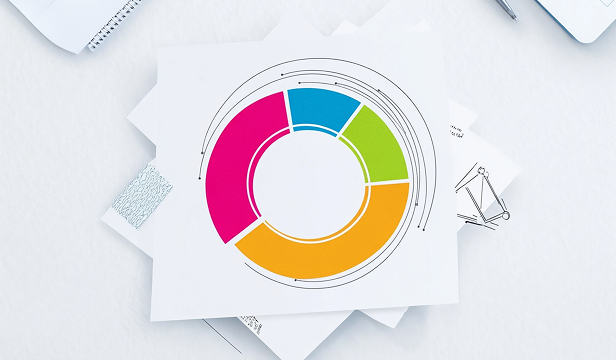Artificial Intelligence (AI) is revolutionizing the creative industry, particularly in video production. AI-generated videos are…

Colour plays a crucial role in branding and logo design. It has the power to evoke emotions, influence perceptions, and create a lasting impression. Understanding the psychology of colours can help businesses craft a strong visual identity that resonates with their target audience and reinforces their brand message.
Why Colour Matters in Branding
Colours are more than just visual elements; they shape how consumers perceive a brand. The right colour choices can:
- Enhance brand recognition
- Elicit specific emotions
- Influence purchasing decisions
- Differentiate a brand from competitors
By leveraging colour psychology, businesses can align their brand identity with their values, mission, and target market preferences.
The Meaning of Colours in Branding
1. Red: Passion, Energy, and Excitement
Red is a bold and dynamic colour that stimulates action and urgency. It is commonly used in branding to convey passion, excitement, and intensity. Brands that use red often want to capture attention and evoke strong emotions.
- Commonly used by: Coca-Cola, YouTube, Netflix
2. Blue: Trust, Stability, and Professionalism
Blue represents trust, reliability, and security. It is often used by financial institutions, healthcare brands, and tech companies that want to establish credibility and professionalism.
- Commonly used by: Facebook, IBM, PayPal
3. Yellow: Optimism, Warmth, and Cheerfulness
Yellow is associated with happiness, energy, and creativity. Brands use yellow to evoke positive emotions and create a sense of approachability.
- Commonly used by: McDonald’s, Snapchat, IKEA
4. Green: Growth, Health, and Sustainability
Green signifies nature, health, and environmental consciousness. It is commonly used by organic, eco-friendly, and wellness brands.
- Commonly used by: Starbucks, Whole Foods, Animal Planet
5. Orange: Playfulness, Enthusiasm, and Innovation
Orange is a vibrant and energetic colour that conveys fun and creativity. Brands that use orange often want to appear friendly and adventurous.
- Commonly used by: Nickelodeon, Fanta, Harley-Davidson
6. Purple: Luxury, Creativity, and Wisdom
Purple is associated with royalty, sophistication, and imagination. It is often used by brands that want to evoke a sense of exclusivity or creativity.
- Commonly used by: Cadbury, Hallmark, Twitch
7. Black: Power, Elegance, and Sophistication
Black is a timeless and versatile colour that exudes authority, elegance, and luxury. High-end and minimalist brands often use black to create a strong visual identity.
- Commonly used by: Chanel, Nike, Apple
8. White: Simplicity, Purity, and Cleanliness
White represents minimalism, clarity, and purity. It is often used by modern and luxury brands to create a sleek, clean look.
- Commonly used by: Apple, Tesla, Adidas
9. Grey: Neutrality, Balance, and Sophistication
Grey conveys professionalism and practicality. It is commonly used by tech and automotive brands looking to establish a sense of reliability and neutrality.
- Commonly used by: Mercedes-Benz, Honda, Sony
10. Pink: Femininity, Playfulness, and Compassion
Pink is often associated with softness, romance, and nurturing. It is frequently used by brands targeting female audiences or promoting beauty and lifestyle products.
- Commonly used by: Barbie, Victoria’s Secret, T-Mobile
Choosing the Right Colour for Your Brand
When selecting colours for your logo and branding, consider the following factors:
- Brand Personality – What emotions and messages do you want your brand to convey?
- Target Audience – What colours resonate most with your customer base?
- Industry Trends – What colours are commonly used in your industry, and how can you stand out?
- Cultural Context – Different cultures associate colours with different meanings, so consider your global audience.
- Colour Combinations – Ensure a harmonious balance between primary and secondary colours for a cohesive brand identity.
Conclusion
Colour psychology is a powerful tool in branding and logo design. By carefully selecting colours that align with your brand values and audience preferences, you can create a compelling visual identity that fosters recognition, trust, and engagement. Whether you choose bold reds, calming blues, or luxurious purples, the right colour choices can elevate your brand and leave a lasting impression.



